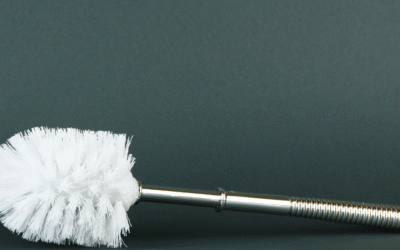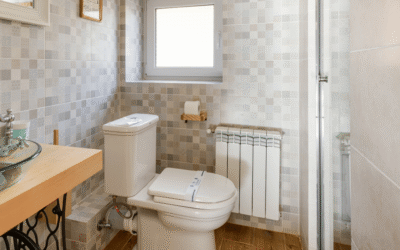Choosing the right mountain bike tyres can transform your ride, making the difference between a smooth adventure and a bumpy mishap. Tyres are more than just rubber—they’re the unsung heroes providing grip, reducing rolling resistance, and absorbing shocks. Whether you’re tackling cross-country trails or daring downhill descents, the right tyres are crucial for performance and safety.
Top Amazon Sellers
Key Takeaways
- Choosing the right mountain bike tyres is essential for enhancing grip, reducing rolling resistance, and absorbing shocks, contributing to both performance and safety on various terrains.
- Different tyre types cater to specific riding styles such as cross-country, downcountry, trail, and enduro, each optimised for unique terrain challenges and riders’ needs.
- Important factors in tyre performance include cornering, traction, rolling resistance, and durability. A well-chosen tyre ensures optimised handling and longevity.
- Consider key features like tread patterns, compounds, tyre width and size, and tubeless versus tubed systems to match your biking style and terrain preferences.
- Adjusting tyre pressure and balancing the design between front and rear tyres can significantly optimise your mountain biking experience, improving control and comfort during rides.
Best Mountain Bike Tyres for Different Terrains
Choosing the best mountain bike tyres based on terrain can improve performance and safety. Each tyre type suits different terrains, impacting grip, control, and speed.
Cross-Country Tyres
Cross-country tyres favour lightweight design and minimal rolling resistance, ideal for smoother trails. Their narrow profiles and harder compounds enhance speed and efficiency for riders focusing on endurance and agility.
Downcountry Tyres
Downcountry tyres blend the speed of cross-country with more grip for varied terrains. With slightly burlier construction and more aggressive tread, they handle rougher paths without sacrificing too much speed, offering versatility across mixed conditions.
Trail Tyres
Trail tyres deliver enhanced grip and stability on technical and varied terrains. These heavier tyres feature robust construction to tackle rocky and muddy surfaces while providing control and precision for riders navigating complex routes.
Enduro Tyres
Enduro tyres prioritise durability and traction for aggressive and demanding terrains. They feature larger knobs and tougher casings, providing increased protection and grip on steep, rough trails, making them ideal for riders pushing limits in challenging environments.
Evaluating Mountain Bike Tyre Performance
Assessing performance ensures that riders experience optimised grip, durability, and efficiency. Key factors include cornering, traction, rolling resistance, and tyre longevity.
Cornering and Traction
Cornering and traction play crucial roles in mountain biking. Tyre design, particularly shoulder knob placement and rubber compound, affects performance. Large side knobs with appropriate siping ensure better grip on varied terrain, enhancing rider control and stability in turns.
Rolling Resistance and Efficiency
Rolling resistance impacts a tyre’s speed and ease of movement. Tyres with lower resistance require less effort to pedal, improving efficiency. The balance of casing thickness and air pressure directly influences rolling speed, making it vital for riders seeking optimal performance on diverse terrains.
Durability and Longevity
Durability relates directly to the tyre’s ability to withstand wear and tear over time. A tyre’s compound and construction determine its lifespan, with harder compounds offering extended longevity. Durable tyres not only save costs but also maintain consistent performance across multiple rides.
Factors to Consider When Choosing Mountain Bike Tyres
Selecting the best mountain bike tires involves evaluating several key factors that influence performance and handling on the trail.
Tread Patterns and Compounds
Tread patterns significantly affect a tyre’s grip and rolling resistance. While open patterns with large knobs suit wet conditions, closed patterns offer stability on hard surfaces. Compounds impact durability and traction, with softer compounds improving grip but wearing faster.
Tyre Width and Size
Tyre width influences grip, comfort, and protection. Wider tyres generally provide better traction and cushioning but may compromise handling precision. Sizes range from 2.2 to 2.6 inches, with cross-country preferring narrower, and trail or enduro opting for wider.
Tubeless vs. Tubed
Choosing between tubeless and tubed systems affects puncture resistance and ride comfort. Tubeless tyres generally offer lower pressure use, reducing punctures and improving grip. However, tubed tyres are simpler to set up and maintain, appealing to some riders.
Tips for Optimising Tyre Performance
Optimising tyre performance is crucial for a superior mountain biking experience, enhancing grip and control.
Correct Tyre Pressure
The optimum tyre pressure improves comfort and grip. Stiff casings require lower pressures for flexibility, while larger tyre volumes support decreased pressure without increasing puncture risk. Manufacturer-recommended pressures, printed on sidewalls, provide a starting point; however, experimentation tailors pressure to riding style and terrain.
Front vs. Rear Tyres
Front tyres influence steering and cornering. They require designs promoting grip and stability. Rear tyres focus on pedalling and braking traction, often featuring tread patterns for efficiency and rolling resistance. Balancing between different designs enhances performance on varied terrains, aligning with the best mountain bike tyres attributes.
Conclusion and Top Picks
Choosing the right mountain bike tyres is crucial for enhancing performance and safety on the trails. With a variety of options tailored to different terrains and riding styles, riders can optimise their biking experience by selecting tyres that align with their specific needs. The comprehensive guide provided helps navigate the vast selection, ensuring riders make informed decisions. By considering factors such as tread patterns, tyre width, and pressure, cyclists can significantly improve their grip, control, and efficiency. Ultimately, the right tyre choice not only boosts ride quality but also ensures a safer and more enjoyable adventure on any trail.
Frequently Asked Questions
Why are mountain bike tyres important for ride quality?
Mountain bike tyres enhance ride quality by providing grip, reducing rolling resistance, and absorbing shocks. They ensure better traction on various terrains, improving control and safety. The correct choice of tyres can significantly impact performance, making it essential to match them to both the trail and rider’s preferences.
How do I choose the right mountain bike tyres?
Choosing the right mountain bike tyres involves considering your riding style and the terrain. Identify whether you’re riding cross-country, downcountry, trail, or enduro tracks. Then select tyres that offer the best balance of speed, grip, and durability suited to those conditions.
What are the key factors affecting tyre performance?
Tyre performance is influenced by cornering, traction, rolling resistance, and longevity. Factors such as tread design, rubber compounds, and tyre construction determine these attributes. The placement of shoulder knobs, tyre width, and pressure also contribute to overall performance.
What types of mountain bike tyres are available?
Mountain bike tyres are typically categorised into four types: Cross-Country, Downcountry, Trail, and Enduro tyres. Each type is designed for specific conditions, focusing on attributes like grip, control, and speed. Selecting the right type depends on the terrain and riding demands.
Is there a difference between tubeless and tubed tyres?
Yes, tubeless tyres allow for lower pressure, reducing the risk of pinch flats and enhancing grip and comfort. This makes them suitable for technical terrains. Tubed tyres may require higher pressure, which can limit grip but offer easier maintenance. Preferences depend on riding style and conditions.
How do tread patterns affect tyre performance?
Tread patterns impact grip, control, and rolling resistance. Aggressive patterns provide better traction in loose or muddy conditions, while smoother patterns reduce rolling resistance on hard-packed trails. Choose tread designs that match your typical riding environment for optimal performance.
How important is tyre pressure in optimising performance?
Correct tyre pressure is crucial for optimising comfort, grip, and performance. Low pressure enhances grip and shock absorption, while higher pressure increases rolling efficiency. Balancing these factors, considering terrain and riding style, helps achieve the best overall performance and safety.











